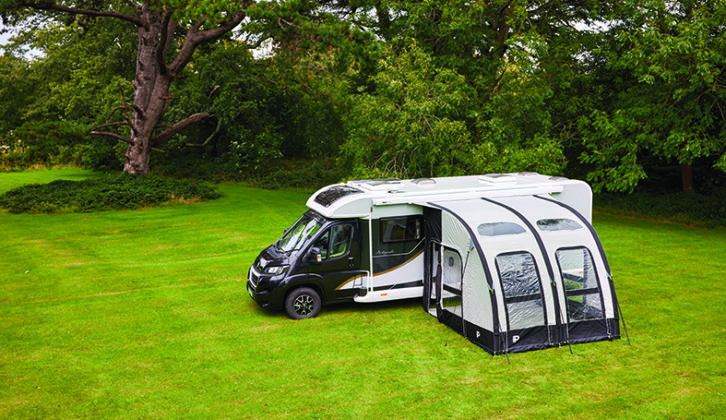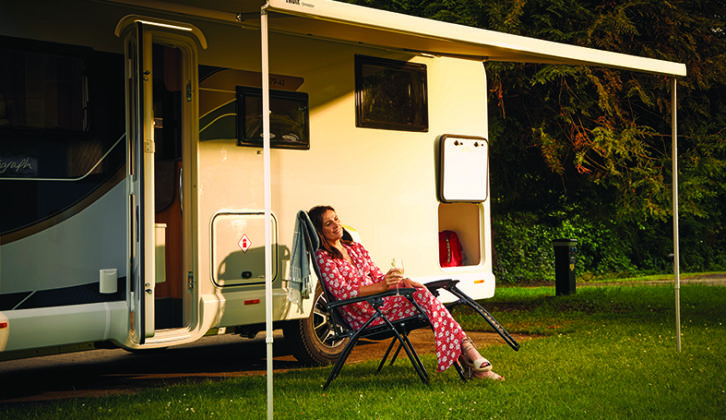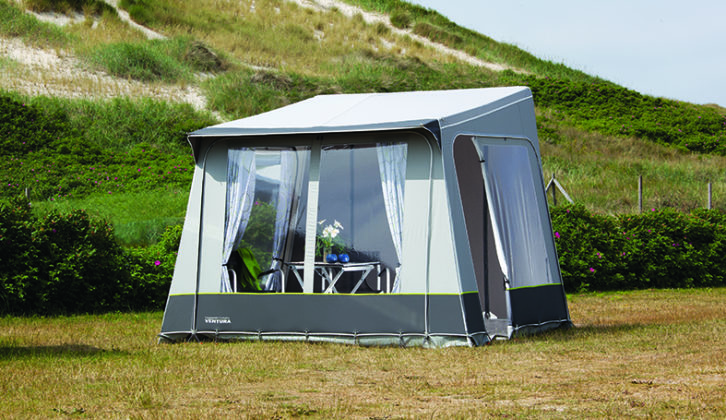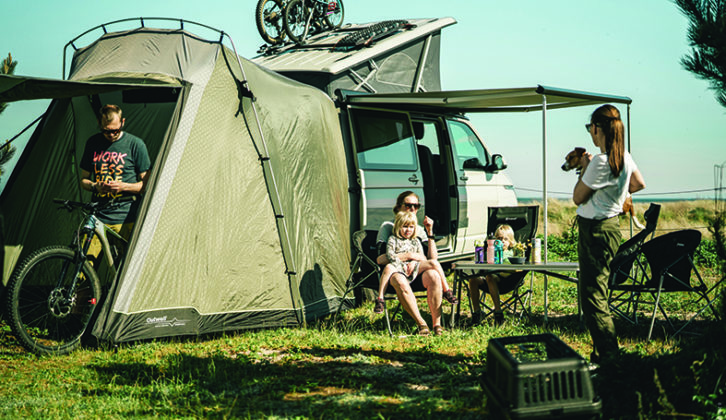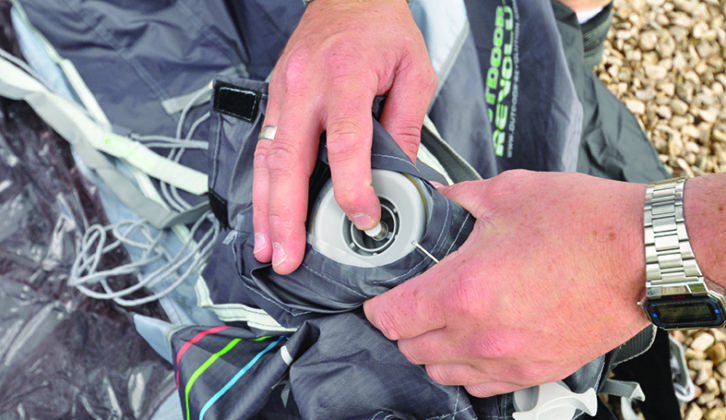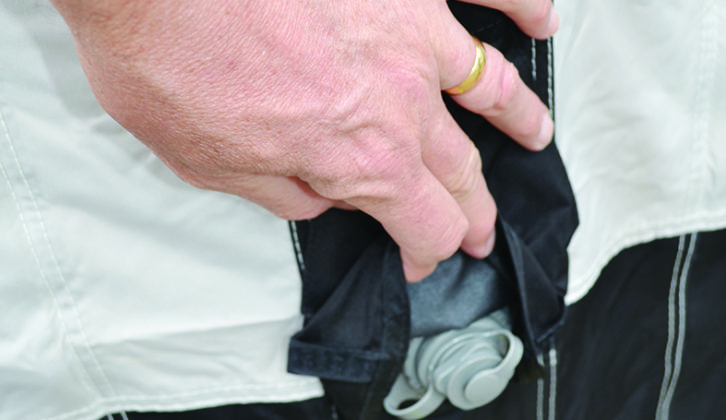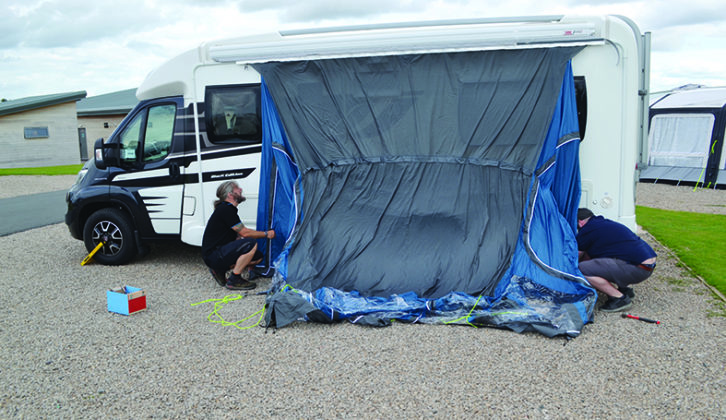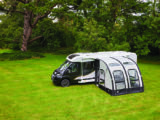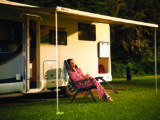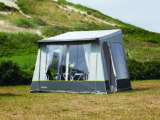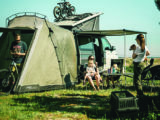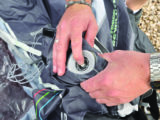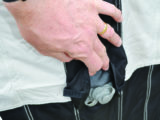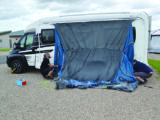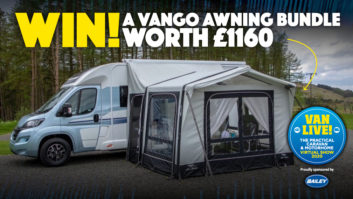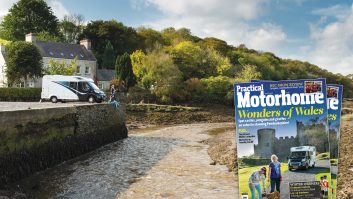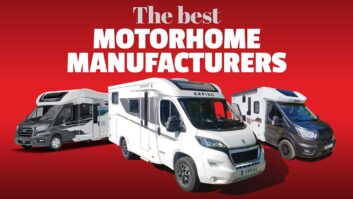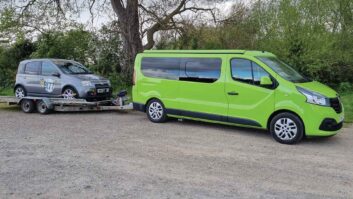One of the main attractions of the motorhome lifestyle is the hygge effect: the sheer cosiness of settling yourself down in a small, warm space, somewhere that you will always feel safe and secure.
This is indeed a wonderful thing, but many people find they need a bit more room for convenient motorhome living – for accommodation and storage or for practical activities during the daytime – particularly if the vehicle they own is a small campervan.
They could, of course, buy a bigger motorhome, although that might be more challenging to drive and store, and that’s where having one of the best motorhome awnings comes in. It’s a better solution that’s simple and relatively cheap. You can then maximise this space by buying some furniture, such as a camping chair, to further enhance your tour.
Why use an awning?
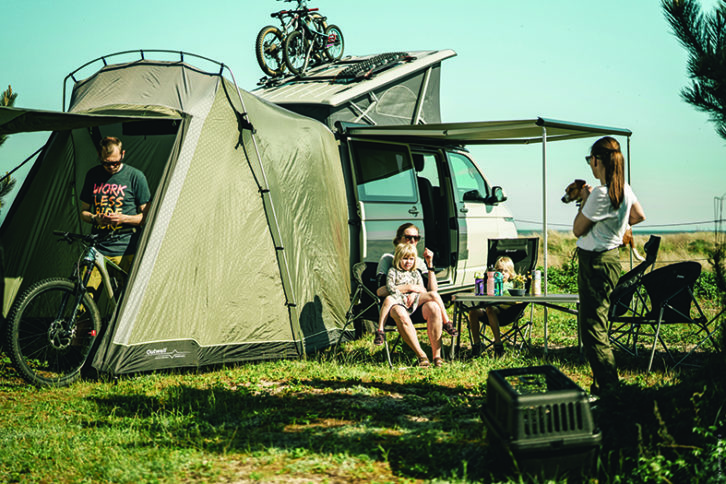
The answer is an awning. Awnings are fabric structures that attach to or sit beside your ‘van, delivering extra usable space to suit your need, ideal if you’re looking to find some room for one of the best camping tables.
Motorhome awnings are available in a variety of styles. First there’s the canopy – the wind-out unit that is permanently attached to the side of your ‘van at roof level. You might already have one of these fitted.
Then there’s the drive-away – these are tent-like units that can be attached to the side of your vehicle, but can also be left freestanding. These do indeed allow you to drive away, leaving the awning in place, and are a good way of both expanding your living space and reserving your pitch when you travel to visit a nearby attraction.
You can also get a front-and-sides arrangement for a canopy awning, which is usually referred to as a safari room. These are fine if you are staying in one place for a good while, but can involve a fair bit of time to take down if you are frequently moving on.
Whichever type you choose, you’ll need to make sure that it offers enough space for your needs. Porch-style drive-away awnings might be as small as one to two metres wide – providing an ‘airlock’ to stop the weather getting straight into the ‘van when the door is opened, and a boot room – or as large as a few metres of flexible space, for living, dining, storage or sleeping.
Many modern awnings also feature the option of add-on annexes, which make excellent extra bedrooms.
Costwise, new awnings can vary from £300 to £2000+, and you very much get what you pay for. As with most products, cheap imports are available; although for longevity, and build and materials quality, we would avoid them and go for something at least mid-market.
That means a minimum investment of £400 to £700. This will get you a quality product from an established brand, which should easily last for five to 10 years if it is properly used, stored and maintained.
Products to suit all budgets
If your budget doesn’t stretch that far, however, consider buying a used awning from a recognised brand on selling sites such as eBay or Gumtree. Time your purchase right and you’ll find there are some amazing bargains to be had – but only buy from trusted sellers with good levels of positive feedback.
As I write, I’m looking at an air awning being sold by a private seller on eBay. It looks great and is priced at £140, but the image is from the manufacturer’s website (although it has been cropped), the seller has zero sales or feedback and there’s no product description.
This doesn’t mean that it’s a dodgy deal, but it does make me cautious. Personally, I would avoid any seller with less than a few dozen positive feedback reports.
Interestingly, I spotted the same product available new from reputable stores online, with prices at not much more than that second-hand version – so it pays to shop around!
You could even consider making your own – in which case our guide to how to make an awning is well worth a look.
Air or pole?
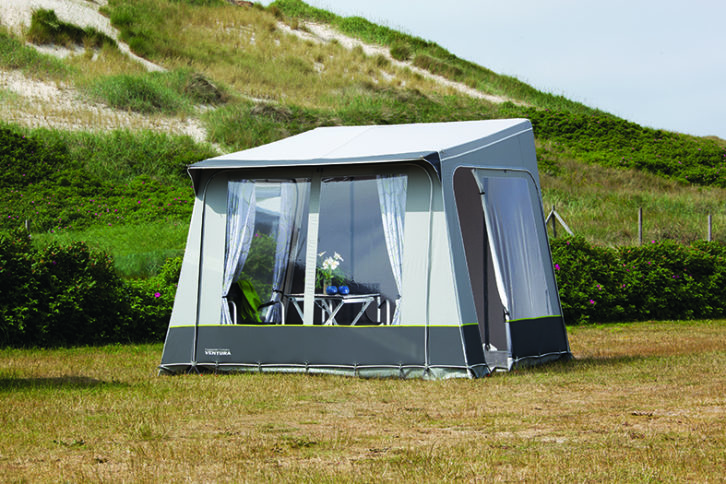
In the past decade, there has been a revolution in awning design, in the form of inflatable air awnings. These have actually been around since the 1950s, but developments in materials technology mean they are now a viable and extremely practical alternative to traditional pole awnings.
Air awnings (and see our best air awning for a motorhome guide if you’re after one) feature strong inflatable tubes, which, once blown up to the correct pressure, are incredibly rigid and durable. The benefit is that rather than fighting with a bag of (often) heavy steel poles, which all look alike, you now simply attach a manual or electric pump to the valve on the awning (there’s usually one or two) and then start pumping.
Within a minute, the awning will begin to take shape, and in less than two, it will be totally inflated. This process is especially advantageous when it’s being carried out in the rain, because a well-drilled awning builder can have the awning up and fully watertight in about five minutes.
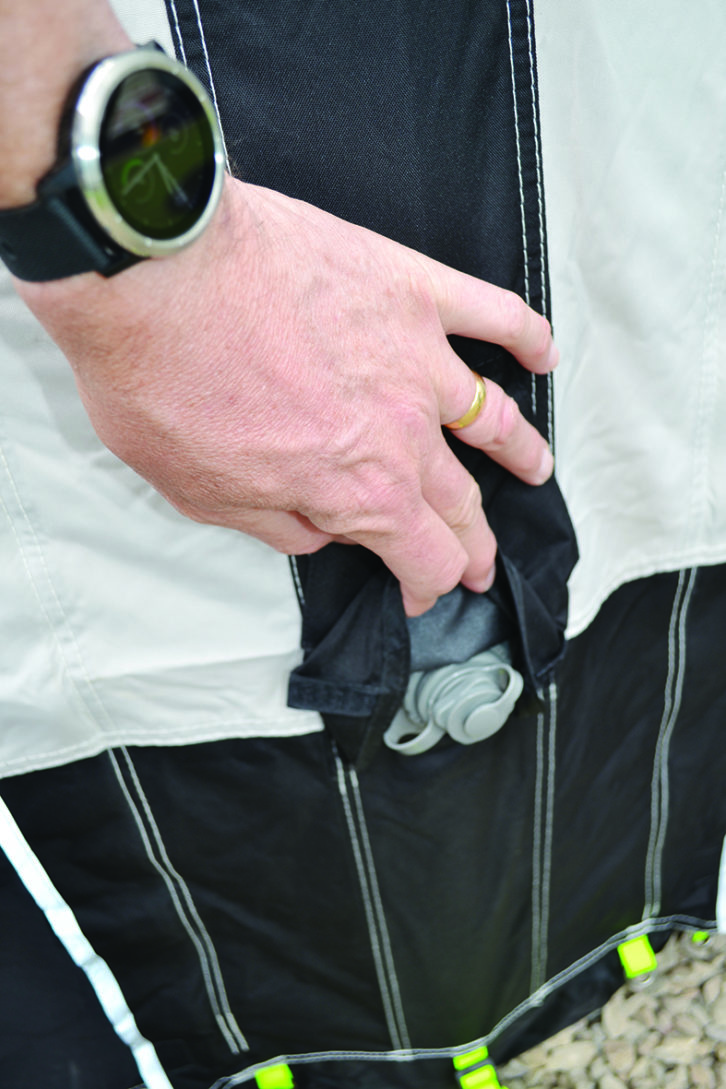
The other benefits of air awnings are that without the poles, you typically save a significant amount of weight.
There’s no cumbersome pole bag to transport, either, and you’re much less likely to bash or scratch the side of your beloved motorhome. Some air awnings can take a while to deflate, however, especially if they are single point inflation, as all that air has to go out the way it came in.
A quality pole awning still has it s place, of course. Nothing looks quite as good as a properly erected pole awning. They can withstand severe weather that might result in an air awning buckling. And even the best air awning might need a top-up of air from time to time.
Pole awnings are now also available with composite/carbon fibre poles, which are strong and light, so help mitigate the weight disadvantage.
Choosing an awning
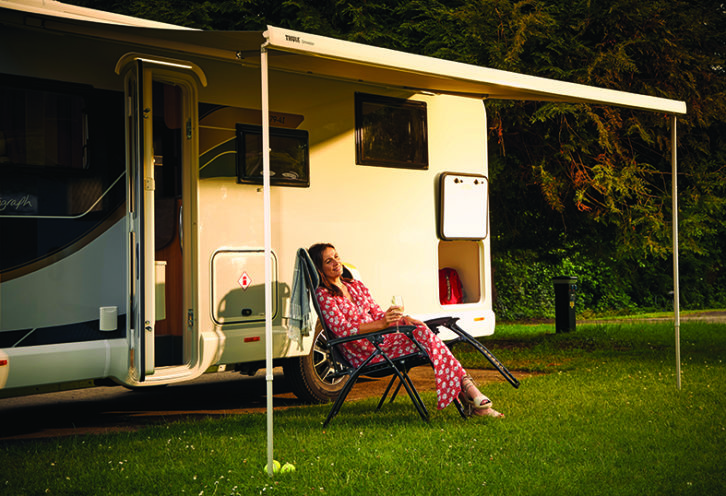
Your eventual choice of motorhome awning is going to depend mainly on the following factors:
Size
How much additional space do you need? Bigger isn’t always better, especially when you consider that the awning has to be transported, carried, unpacked, erected and stored.
In fact, my advice would always be to buy the smallest awning you can comfortably get away with to do the job. The largest awnings can weigh 40kg or more, while a usable one can weigh half that. Older and less mobile motorcaravanners will find an air awning a revelation.
Style
Air or pole? Full or porch? I reckon that an air-filled porch awning is by far the easiest to store, transport and use. But if you need strength and permanence, you should definitely consider the traditional pole option.
Matching your vehicle
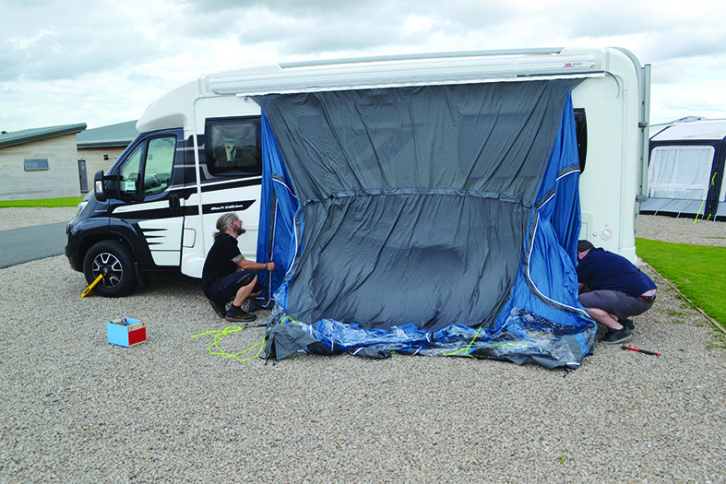
If you choose a drive-away awning, purchase a size that works with the dimensions of your motorhome or campervan and the position of its doors and windows.
Ideally, you don’t want the awning side cutting across a window and preventing it from being opened. Likewise, you don’t really want any of the ancillaries (heating, fridge and so on) venting into the awning (ideally, pick a motorhome with the heating, fridge and oven opposite the door).
Many awnings are also available in different heights – you’ll need to work out the correct one for you, using the fixing point on the vehicle. Check the specific product for details.
Brand
Like any other product, there are cheap imported awnings available, but we would advise choosing one from a reputable brand with a good history in the market, and a company that is contactable in case of problems.
The Club affect
The major camping clubs have strict rules about pitching, and if you’re a regular Club site pitcher, you’ll want to stay within the guidelines.
If you have an awning that you think might be in danger of infringing those rules, check with the Club campsite before you visit.
Roll-out awnings
These excellent wind-out ‘shades’ are allowed on Club sites’ non-awning pitches, so long as they don’t break the three-metre rule (again, you should check with the specific Club campsite before travelling).
This might not be the case if you add the side panels, however. For those motorcaravnners who are planning to tour in hotter climes, they can be an excellent option.
Materials
Awning ,materials vary widely in terms of strength, water resistance, cost, opacity, longevity and looks. While all awnings might appear similar, the materials used make the single biggest difference, and this will generally be reflected in their price.
Brands such as TenCate specialise in manufacturing awning materials. Polyester and polyvinyl alcohol coating are often considered the best with a single-coated material ideal for awning walls, and a double-coated fabric more suitable for awning roofs.
If you see a figure in millimetres quoted for the material of an awning, this refers to the fabric’s hydrostatic head, a means of assessing its level of waterproofness. Look for a figure of at least 3000-5000mm; the higher the figure, the better.
Design
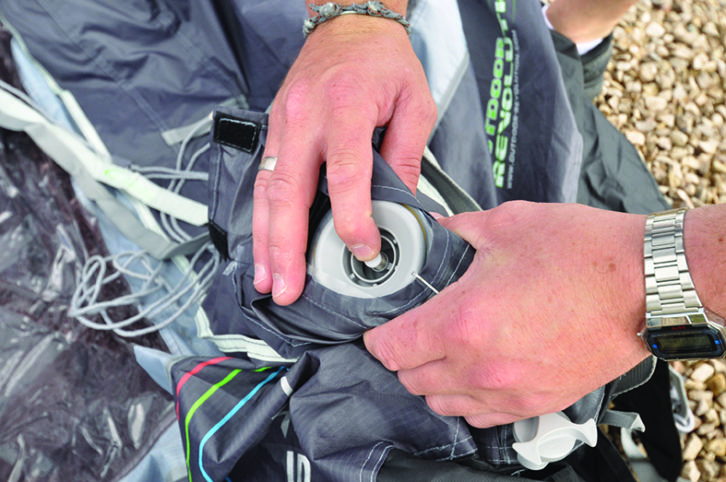
Beyond the space that your awning offers, do you prefer lots of window panels, and therefore a light and airy interior, or do you want more privacy?
Would you like to have a front roof extension, which you can stand under to take off your boots in the rain, and how about the option to add bedroom extensions to your awning?
The quality of the zips, Velcro fixings and guy ropes/storm straps and so on are also crucial elements. For example, some awnings offer fluorescent and luminous guy ropes to help prevent falls in the dark. All of these things need to be factored in.
Buying
Many motorhome dealerships stock excellent awning ranges. They will also have a resident expert to advise you on the best one for your needs.
Choose the right awning for you, then do a quick price comparison to ensure the deal is good. Most vendors will be open to a bit of negotiation, especially if you are planning to spend a significant amount of money.
At the very least, you might find you get a few handy extras thrown in!
If you liked this… READ THESE:
Best motorhome for 2022: our top picks
Many people find they need a bit more room for convenient motorhome living, for accommodation and storage or for practical activities during the daytime
